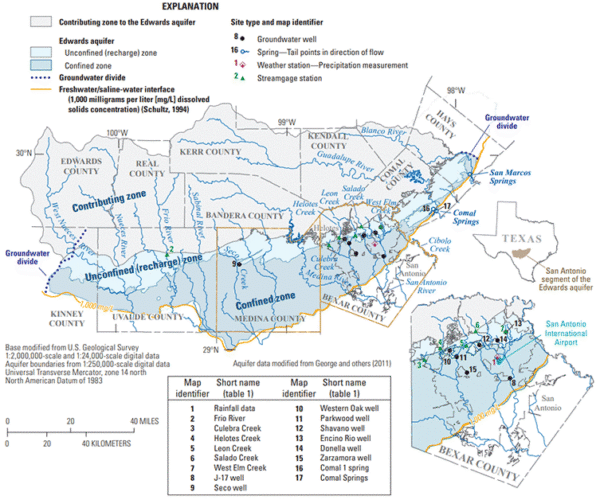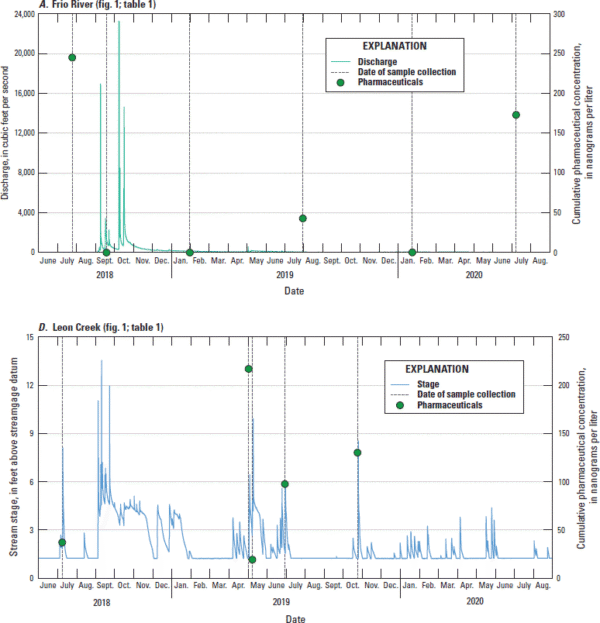
Summary of findings from Opsahl and Musgrove, 2023
The occurrence of emerging contaminants such as pharmaceutical compounds is a topic of growing concern for water resources. Pharmaceuticals are widely used for human and animals and have the potential to enter the environment. The occurrence of pharmaceutical compounds in surface water that recharges the Edwards aquifer can potentially affect groundwater quality. This study evaluated the occurrence and possible sources of pharmaceuticals in south-central Texas and the Edwards aquifer. The study utilized a “source-to-sink" approach that included samples collected from streams that provide recharge to the aquifer, unconfined groundwater, confined groundwater, and a major discharging spring (Comal Spring #1, an orifice of the Comal Springs complex) during 2018-20. An assortment of pharmaceutical compounds was detected at low concentrations at some surface-water sites, whereas detections were less frequent in groundwater and spring discharge.
Some key findings are:
For surface water:
For groundwater:
In summary:

Hydrogeologic setting and study site locations in the San Antonio segment of the Edwards aquifer, south-central Texas. Study locations are also available on the interactive map.

Continuous discharge or stage data and cumulative (sum of individual pharmaceutical concentrations) pharmaceutical concentrations for A, the Frio River and D, Leon Creek, south-central Texas, June 2018-August 2020.